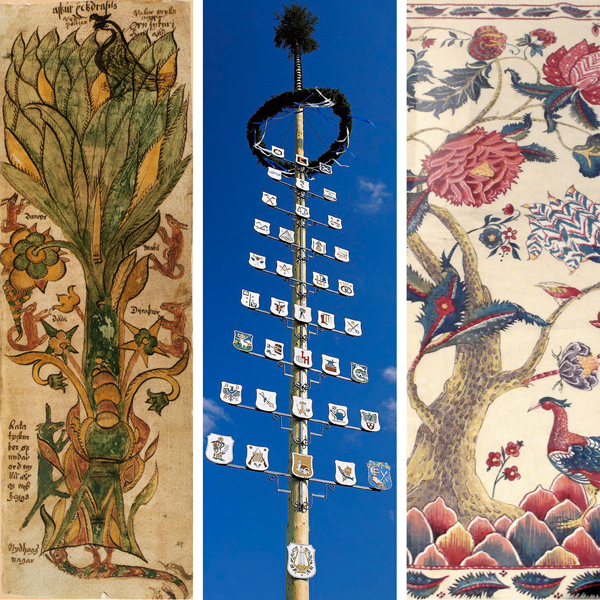It was in the middle of the ‘Walpurgisnacht’ (the night from April 30 to May1) when a small group of German teenagers sneaked to the marketplace of a neighbouring village in Oberfranken to steal the ‘Maibaum’ which was supposed to be erected there during the festive gathering the following morning. If they succeeded the villagers would have to pay, according to this Bavarian custom, a tribute of beer and food in order to retrieve it.
It is believed that every ‘Maibaum’ has a blessing effect on its town. It is a symbol of fertility and prosperity. Although its contemporary form dates back to the 16th century its real origin is far older: Germanic tribes already worshipped holy trees long before they were christianized. Presumably these cults have their seeds in ‘Yggdrasil’, the mythologic Norse ‘World Tree’.
The Zuiderzeemuseum in Enkhuizen / Holland exhibits a modern chintz which also shows a ‘Tree of Life’. To some extend it might have the same mythologic background as the German ‘Maibaum’.
Generally the ‘Tree of Life’ is an archetype which is deeply rooted in the psyche of almost every culture. But what does it really mean to us today in our high-speed society in a more or less globalised world? And will it still have a meaning in the future?
